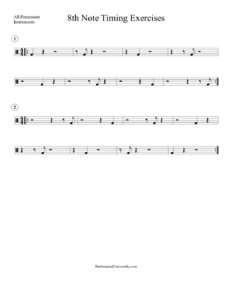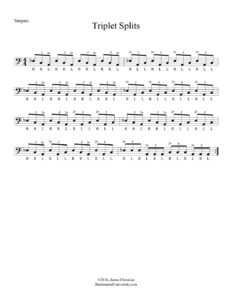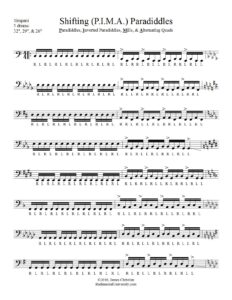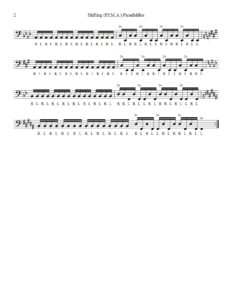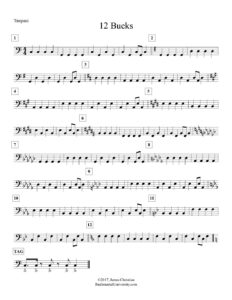
This exercise is a good warm-up for practicing tone quality and pedaling changes. It goes through the circle of fifths, and each section incorporates the tonic and dominant of the key. Like the other “12 Bucks” exercises this week, today’s timpani exercise can be played individually or with a group of percussionists.
This exercise can be played on three drums, but four will be easier. The rhythms are not overly difficult, so it’s a good opportunity to focus on drawing a full tone from the drum on every stroke. When playing with a group, you may want to use a medium hard mallet to produce slightly sharper articulation.
The main challenge on this exercise will be the pitch changes. Gauges will certainly make the changes easier, but a well-trained timpanist can learn to “feel” the next pitch as he or she becomes more familiar with the specific set of drums used. As always, use your ear and learn to adjust quickly, whether you have gauges or not.
Happy pedaling!

